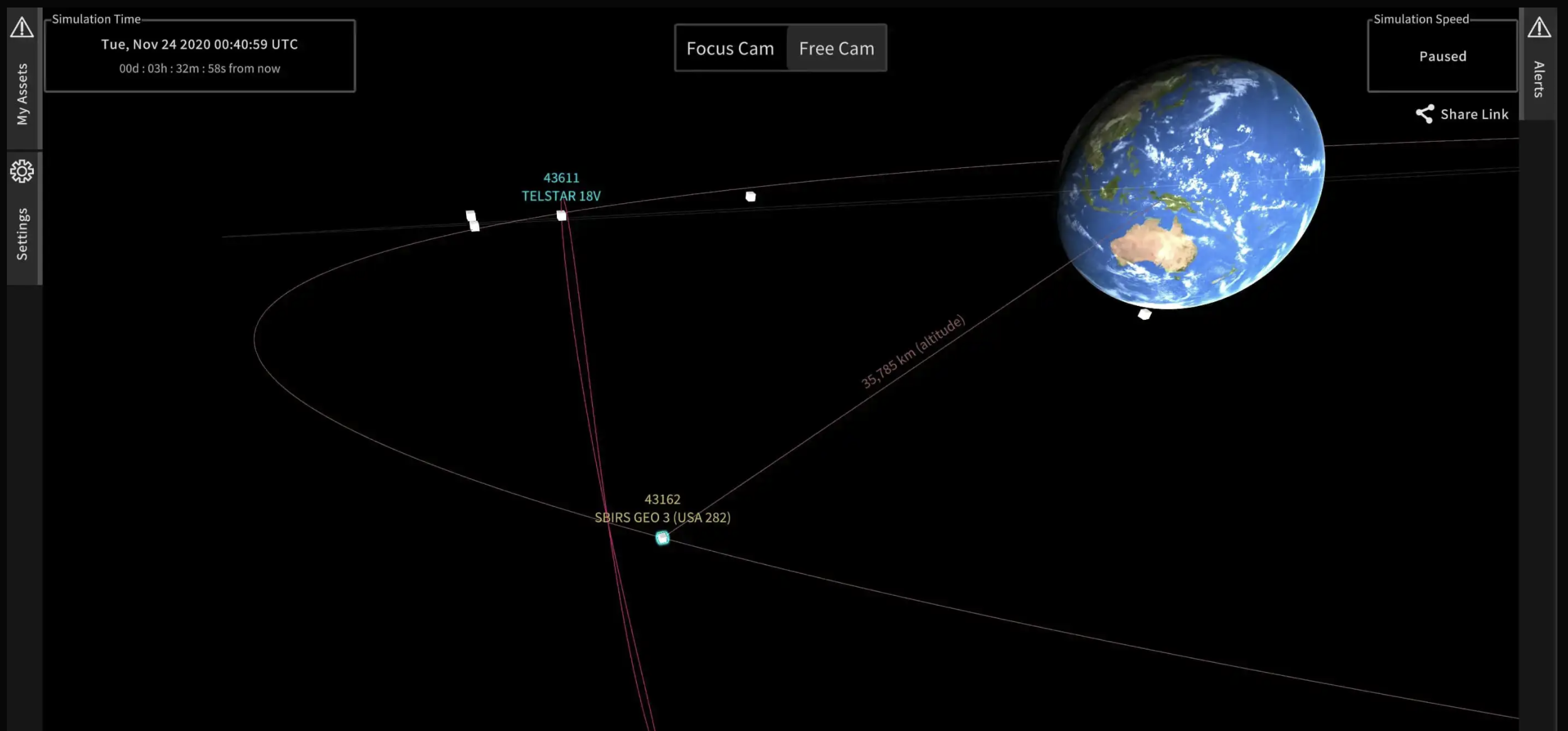The company won a $540,000 small business contract known as a TACFI, or Tactical Funding Increase
WASHINGTON — Saber Astronautics announced Sept. 5 the U.S. Space Force has extended the company’s contract to develop a space domain awareness tool designed for satellite operators.
The company won a $540,000 small business contract known as a TACFI, or Tactical Funding Increase, to add new features to its Space Cockpit software tool. The award follows a $1.8 million U.S. Air Force Small Business Innovation Research award that Saber Astronautics won in 2019 to develop Space Cockpit.
Saber Astronautics USA director Nathan Parrott said the space visualization software was developed on the Air Force’s Platform One enterprise system using DevSecOps standards, short for development, security, and operations. It has been used by Space Force units in both classified and unclassified systems.
“Normally the government buys software and that’s the end of it. But modern warfare, especially in space, is very dynamic. We needed the ability to update the program on the fly to respond to the rapidly evolving threat landscape,” said Parrott. He said Space Cockpit uses 3D graphics and gaming-like controls to give a more intuitive feel to the space domain.
The TACFI contract funds upgrades to the orbit propagation algorithms to support cislunar spaceflight beyond Earth orbit, and adds a space collision warning system developed by Saber called Sentinel.
Jason Held, Saber Astronautics CEO, said hundreds of operators across the Space Force are using the software. He noted that the Space Cockpit provides visual aids that military operators previously did not have. “We’re not sure if it’s replacing any system,” he said. “The customer saw it as a new capability that adds value to the systems they currently use. These things aren’t always a ‘zero-sum’ game where one product wins and another one loses.”
The TACFI contract allows Space Force units to “continue to work with us to add several new features and also lets us continue to reach across multiple units so the program improves iteratively with their developing mission,” said Held.
Headquartered in Australia with U.S. operations in Boulder, Colorado, Saber Astronautics developed Space Cockpit based on a commercial version of the system used by Australia’s space agency and private-sector satellite operators to monitor, fly and diagnose problems in spacecraft.
